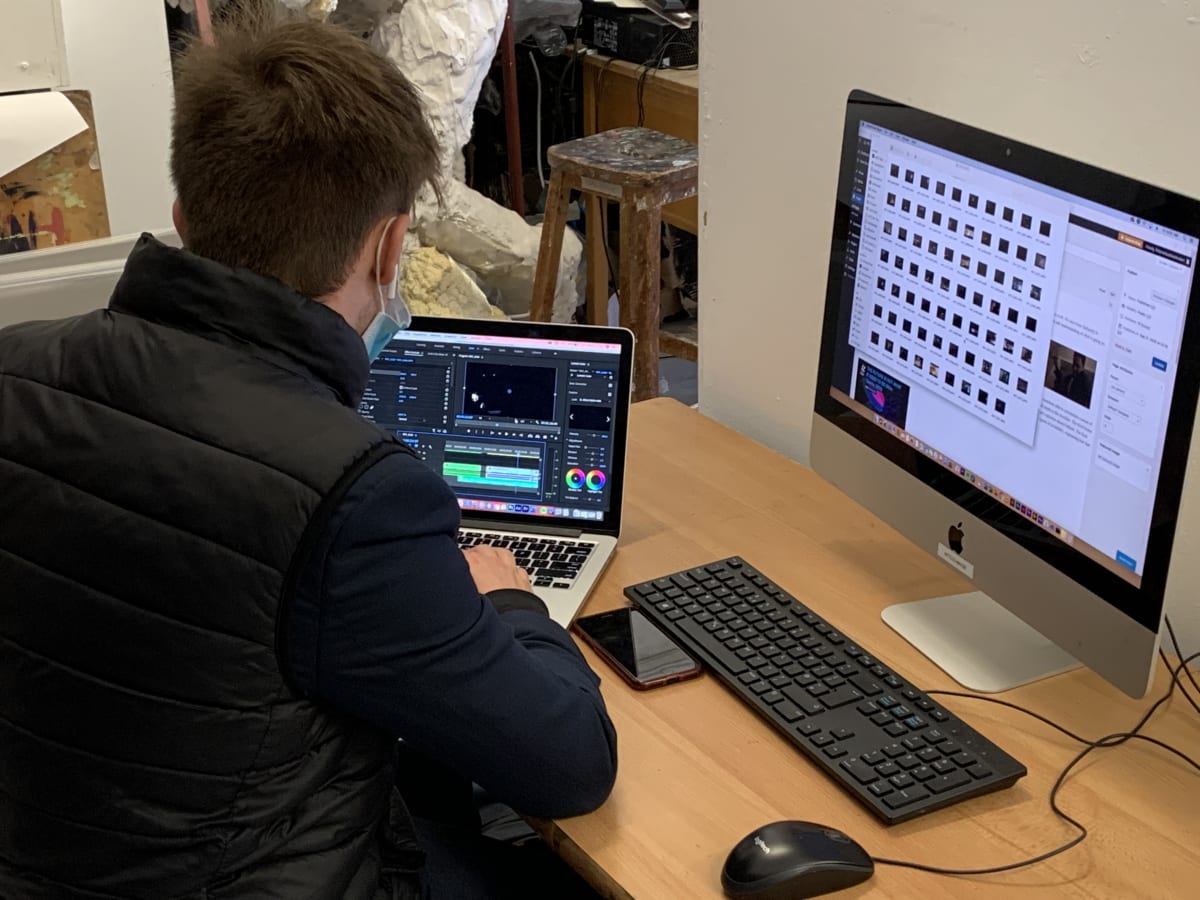






BYOD is about supporting teachers and pupils by making digital technology accessible whenever it can help to improve an aspect of a lesson, aid organisation, make things more efficient (so there is more time for actual learning) or tweak a learning activity so that ‘soft skills’ are more readily practised, or important IT skills developed. It is about achieving a real ‘blend’ of the digital and ‘unplugged’.
This will look very different across different subjects, topics, and year groups, although the Microsoft 365 package (particularly Teams, OneNote and cloud storage) will underpin a lot of our day-to-day use.
Here are some examples of the ways in which BYOD can help develop pupils' learning:
Pupil voice and engagement
Technology offers many ways for all pupils to respond simultaneously and for their ideas and work to be seen in one space by the teacher. While teachers would love to hear in detail from every pupil in every lesson, time limitations make that impossible, and some pupils find speaking in class more difficult than others. BYOD is another tool that teachers can use to find out what every pupil is thinking and understanding.
Collaboration
BYOD offers huge advantages in terms of helping pupils to work together with others. Independent elements of a task can be merged with a partner or wider group’s work in an Office 365 document, before collective decisions are made about how best to structure, edit and develop the final outcome, whether that’s for a scientific poster, presentation, factsheet, group fieldwork project, or essay plan. With work shared and accessible on the cloud, collaborative classwork can be continued seamlessly as collaborative homework.
All pupils can complete a task - an introduction to an essay, a scientific explanation, a political or historical argument - and collectively share in a OneNote collaboration space before discussing and learning from each other’s efforts, as a class.
Opinions generated during paired or class discussion can be captured in Teams posts, and inform an essay written later that evening.
Results from experiments can be contributed to a shared spreadsheet.
Creativity
BYOD allows for a more varied set of outcomes and opens up some creative opportunities, as well as allowing pupils to record and preserve others: a musical or dramatic performance, or a science experiment, can be recorded; a devised film scene, vlog, voiced-over trailer, stopmotion animation, news report, interview or dialogue can be created to explore or explain ideas in a collaborative or original way, or to help develop communication in English or a modern foreign language; visual images can be more readily created, curated and manipulated to illustrate and express ideas.
Resources
Pupils can be tasked with discovering information, or provided with curated resources, from the wealth of the internet: from online galleries, archives and museums in Classics, History, Art, English, RS and DT; to richly presented, up-to-date data in Geography, Politics, Economics or Maths; to authentic and interactive language sources in MFL; to interactive diagrams of scientific structures and processes in Science. Stored within the pupil’s online notebook, these can be kept with the relevant work, whether graphs plotted in Excel, or handwritten (and uploaded) analysis of a painting.
Efficiency and organisation
The efficiencies that BYOD brings, mean more time for high-value learning activities. Worksheets, marked work and resources can be instantly distributed, and can’t be lost or left at home; feedback and digitally stored work can be more readily referred to; work uploaded during a lesson (whether handwritten, typed or recorded) can instantly be seen, watched or heard by the teacher and used to inform the next lesson, without the need to take in books that are required to complete homework; and individual pieces of work can instantly be ‘snipped’ and shown as good examples without needing to make photocopies for the next lesson. Pupils can be helped to learn about effective electronic organisation, as teachers can see their folders, and easily help to rearrange and file work when that extra support is needed.
Feedback, response to feedback and self-review
BYOD aids the instant collection of classwork, which means that work completed – where appropriate – can be submitted electronically during the lesson, and returned electronically before the next lesson, in order, for instance, to inform a piece of homework that needs to be completed. Different – and sometimes very helpful - forms of feedback, such as audio or screen-recorded feedback, can be reviewed and responded to during lesson time by pupils, and pupils are able to record their response to that feedback on the work, or in a feedback log, where both teacher and pupil can easily access it and track progress with the targets set. Pupils are also more easily able to review and edit their own work, and to listen to or watch performances and communication tasks such as conversations in MFL, or presentations, and to critique and learn more from undertaking these tasks.
Pace, variety, support and challenge
BYOD opens up very many ways of helping pupils to practise and review learning in ways that provide instant feedback. When appropriate, it can help them to move at the pace that is right for them (for instance, when engaging with a tricky MFL listening task). It can create energising and enjoyable experiences, and make the repetition that is sometimes necessary to master material, more dynamic and energising, for instance, through games and quizzes. Providing an extra challenge is more readily achieved, too.
